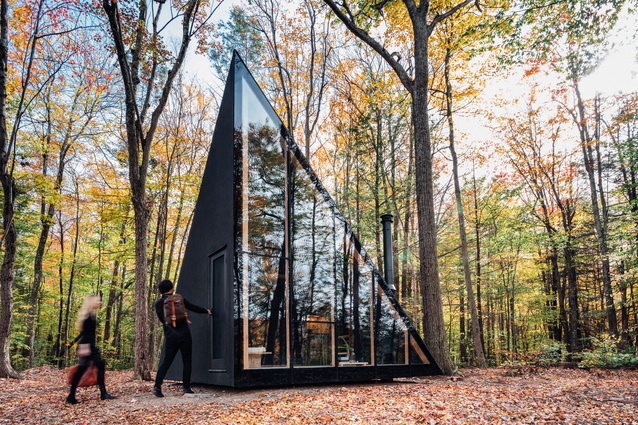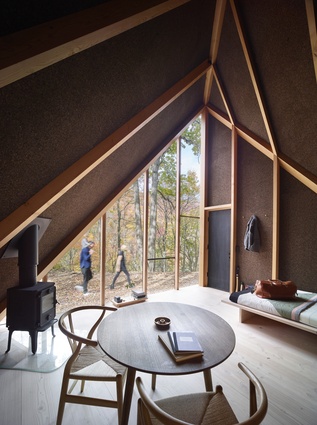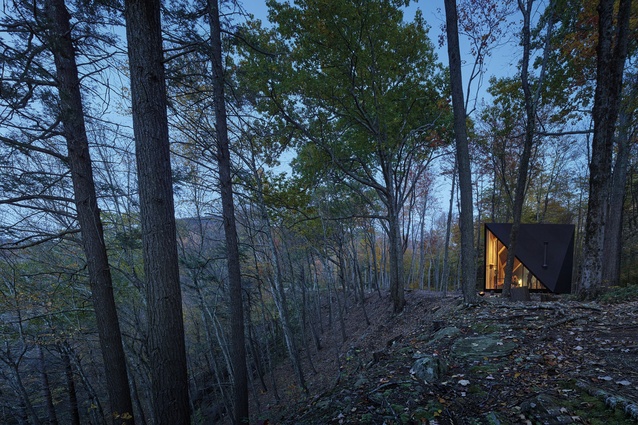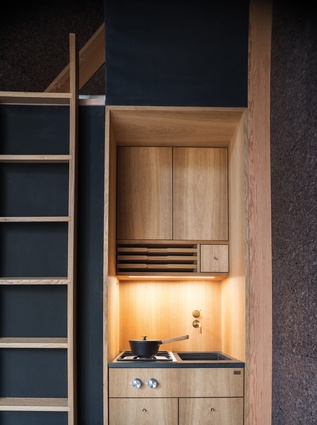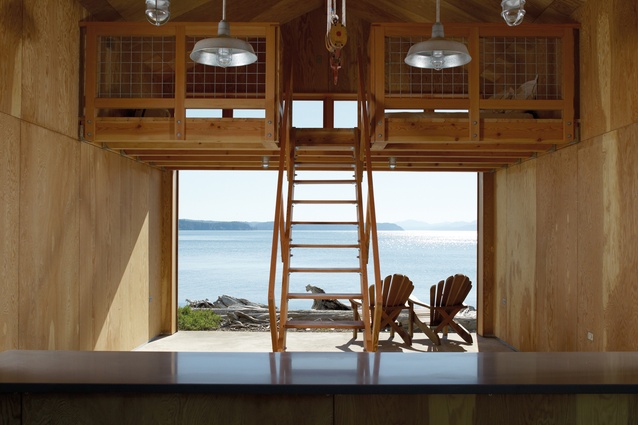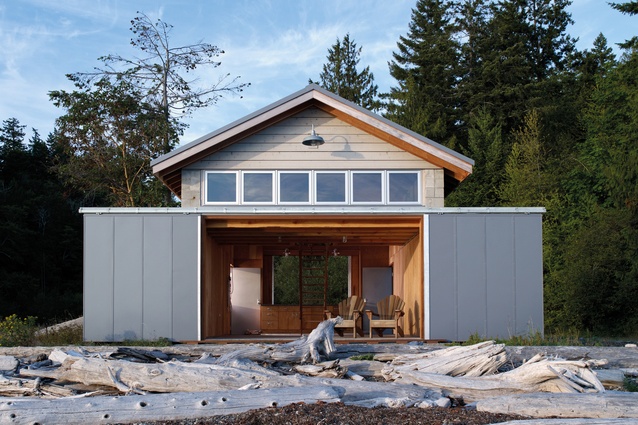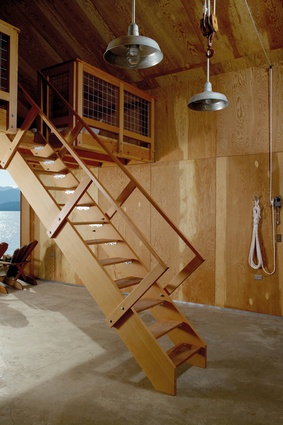Cool cabins: cosy retreats
These two tiny cabins inspire slow living and back-to-nature retreats during the warmer months.
A45 Klein
Hudson Valley, USA
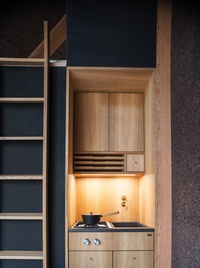
This slice of cosy architecture is a prototype constructed in upstate New York for tiny house company Klein. It was designed by Bjarke Ingels Group using the starting point of a cabin staple, the A-frame, explains Klein founder and designer Søren Rose.
“The classic A-frame structure has its limitations because it is not able to utilise a lot of the space inside. The A45 is a prismatic shape – it’s basically a square where opposite corners have been elevated and two remaining corners go all the way to the ground. This gives the inside a very spacious feel.”
At 17m2, the cabin has a true sense of hygge, with a wood-burning stove positioned at the lower end of the wall and a sleeping nook on the mezzanine level. The floors are Douglas fir and the pine exterior frame is left exposed, with cork panels between the battens.
“In Denmark, cork was a big thing back in the 1970s, often used for insulation,” says Rose. “We used a darkened version of cork – it’s three inches thick and provides an excellent acoustic experience, has great insulation capabilities and looks amazing.”
Hood Canal Boathouse
Washington, USA
Using the footprint and wall structure of an existing boathouse overlooking Puget Sound, architectural studio Hoedemaker Pfeiffer has created this charming, multi-purpose waterside cabin.
The slab floor and concrete masonry unit walls of the original boathouse remain, and a new opening at the rear of the building allows it to be opened up on three sides in the summer. A benchtop along the back wall provides space for a workshop or food preparation. Metal-clad doors slide aside, adding to the boathouse aesthetic and also allowing it to be fastened securely.
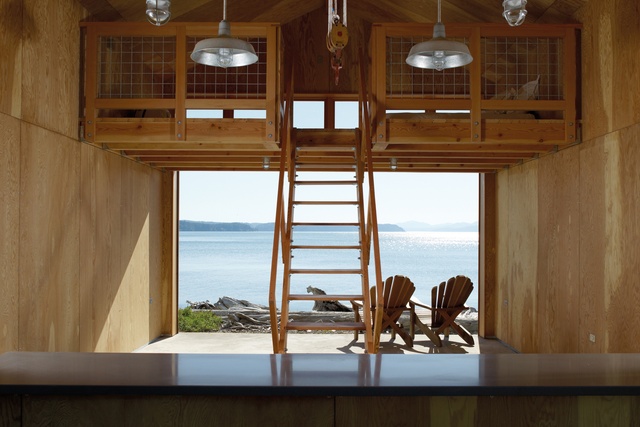
Marine ply interior walls create a warm, cabin-like feel for guests, who can retreat up the retractable stair – with its nautical-style pulley system – to a private sleeping loft with a view of the water.
“When open, the building reveals its plywood interior,” says architect Steve Hoedemaker. “The marine ply is intended to accept occasional flooding at high winter tides and to be useful when attaching to the walls for storage.”
In the winter months, the building is closed up and the retractable stair means the floor is clear for storing boats. The concrete walls and aluminium doors mean it is low-maintenance and secure when left unused for the off-season.
This article first appeared in Urbis magazine.


